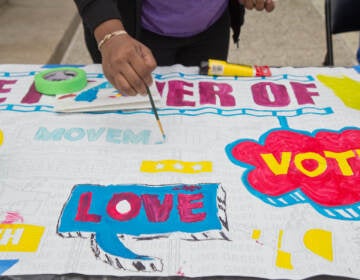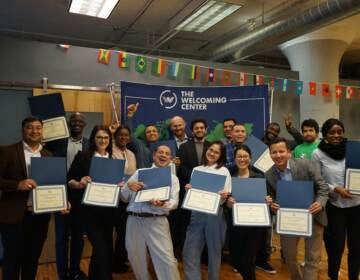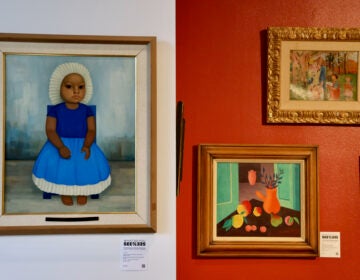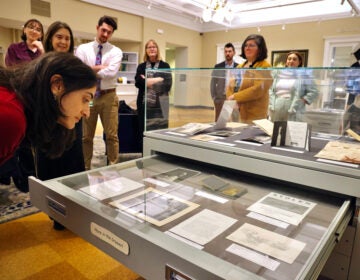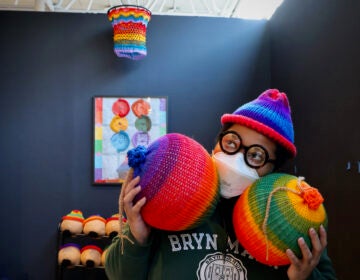’We are so powerful’: Exhibition shows how artists helped shut down Berks immigrant detention center
The Shut Down Berks Coalition has created a touring exhibition of how it successfully closed the federal detention center.
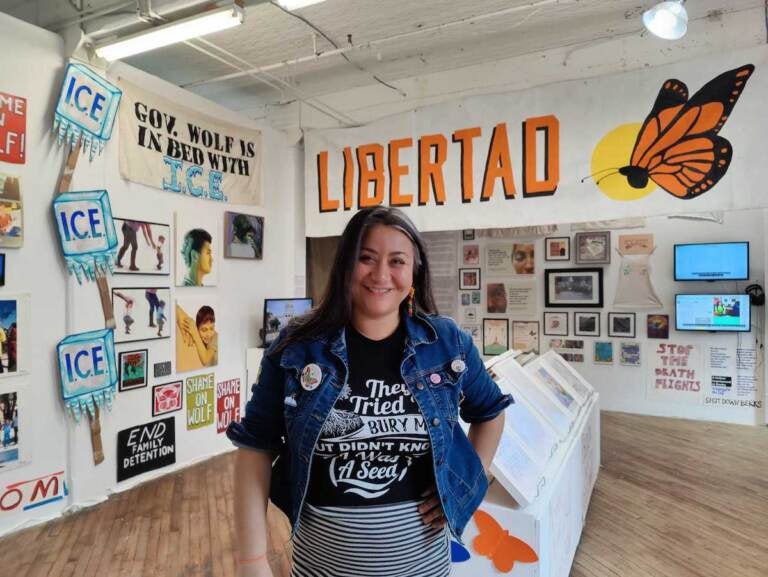
Jasmine Rivera was an organizer with the Shut Down Berks Coalition, and curated the exhibition “Queremos Justicia: Cómo cerramos Berks,” now at the Vox Populi gallery in Philadelphia. (Peter Crimmins/WHYY)
For eight years, the Shut Down Berks Coalition sustained a protest campaign against the Berks County detention center, where immigrant families and children — and later immigrant women — were held by U.S. Immigration and Customs Enforcement.
After nearly a decade of demanding its closure, the campaign was ultimately successful when the center was shut down in January. Having achieved its goal, the coalition shut down, too.
“Queremos Justicia: Cómo Cerramos Berks” (“We Want Justice: How We Shut Down Berks”) is an exhibition chronicling the shifting strategies of the movement as it maneuvered during the Trump administration, the pandemic, and changes in U.S. immigration policy.
Art was central to its success.
“Art plays such a crucial role in the immigrant rights movement as a whole, and in this campaign,” said coalition organizer Jasmine Rivera, who curated “Queremos Justicia,” now on view at the Vox Populi art gallery in Philadelphia.
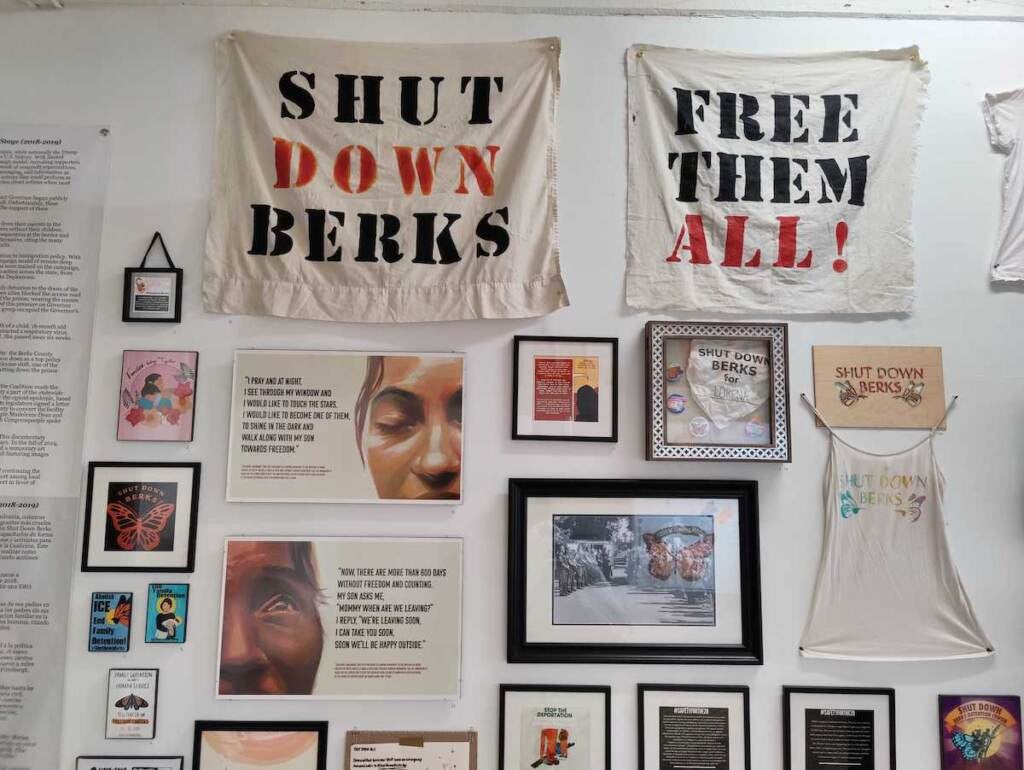
The movement to close the detention center began in 2014 after news broke that a 19-year-old mother who was incarcerated with her toddler was repeatedly sexually assaulted by a guard. Rivera believed a movement to close the center had to be centered on existing immigrant communities in Pennsylvania, so she engaged immigrant families in art workshops, or art builds.
“Bring the family. It’s kind of what we do. I bring my family to everything we do,” Rivera said. “Art is a way to bring folks together, to create together, to center the voices of impacted people. That art was being used in direct actions at our protests, at our rallies, using art to really underscore our demand.”
Rivera also proactively sought out professional artists to join the campaign’s working group to design imagery that could be used in direct-action protests, on t-shirts and buttons, and in online posts.
“A lot of people don’t know who to ask. A lot of people need art for campaigns, but maybe don’t make a very explicit call,” said Jeanne D’Angelo, a freelance illustrator who started contributing to Shut Down Berks in 2019.
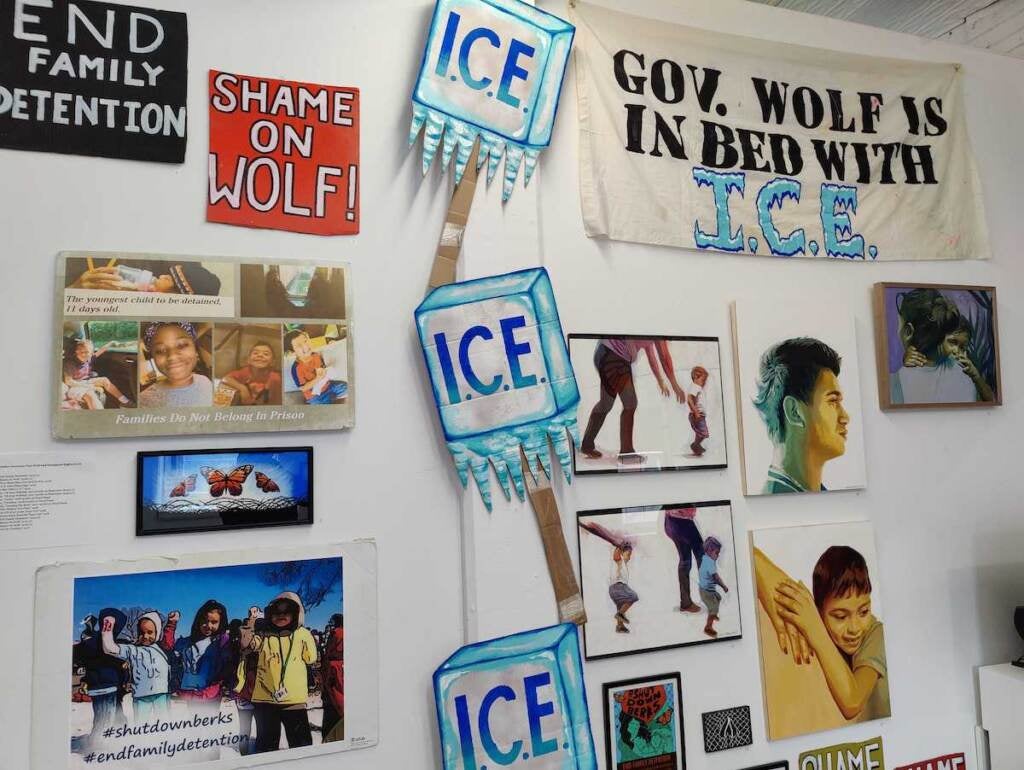
D’Angelo, who typically does illustration work in the fantasy and science fiction vein, found herself making a wide variety of work.
“I designed a banner image that you could crop and use for different Facebook posts,” she said. “We made a ton of hand-painted signs for protest events. We screen printed bandanas. Someone in the artist working group made a stencil to make t-shirts. We had a button making event. I made puppets through Spiral Q. There’s probably more stuff I’m forgetting now.”
In 2016, the campaign set its sights on Governor Tom Wolf, whose office had the power to issue an Emergency Removal Order that would release all the families in the center. Artists with Shut Down Berks began creating imagery that could be incorporated into flyers and online posts that asked people to call or write the governor’s office and demand he issue an ERO.
To that end, prominent Philadelphia artist Michelle Angela Ortiz painted portraits of detainees on basic white backgrounds that could be replicated and formatted into whatever material the coalition needed.
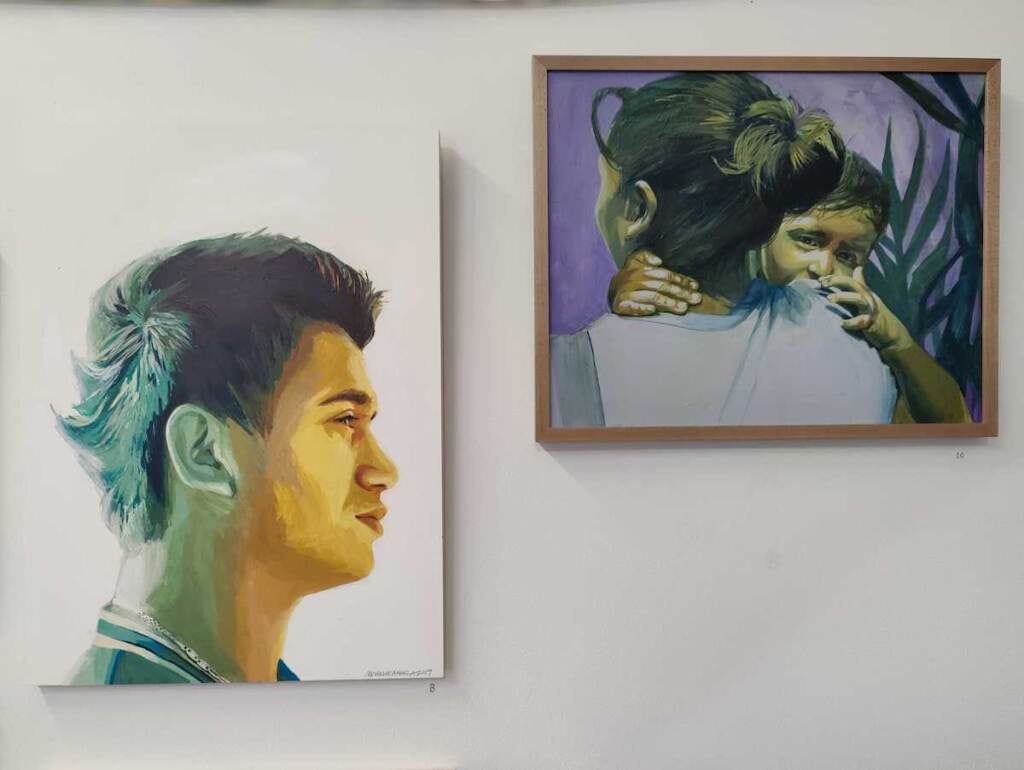
When Donald Trump became president in 2017, he instigated a shift in U.S. immigration policy that forcibly removed children from their parents, sparking an urgent national conversation. The Shut Down Berks Coalition responded by going beyond Berks County and Harrisburg, creating campaign materials that could be shared online and adopted by immigrant rights organizations across the state that were not immediately associated with the coalition.
“We saw folks in Scranton, in Erie, in Pittsburgh, people we never met before taking to the streets because they were able to utilize these resources that we made public and available to everyone,” Rivera said. “A big piece of that success was art that accompanied that information.”
The motif seen repeatedly in Shut Down Berks materials is the monarch butterfly, which has long been used as a symbol for immigrant rights, particularly for Mexican and Latino immigrants as the insect migrates every year across the U.S. border.
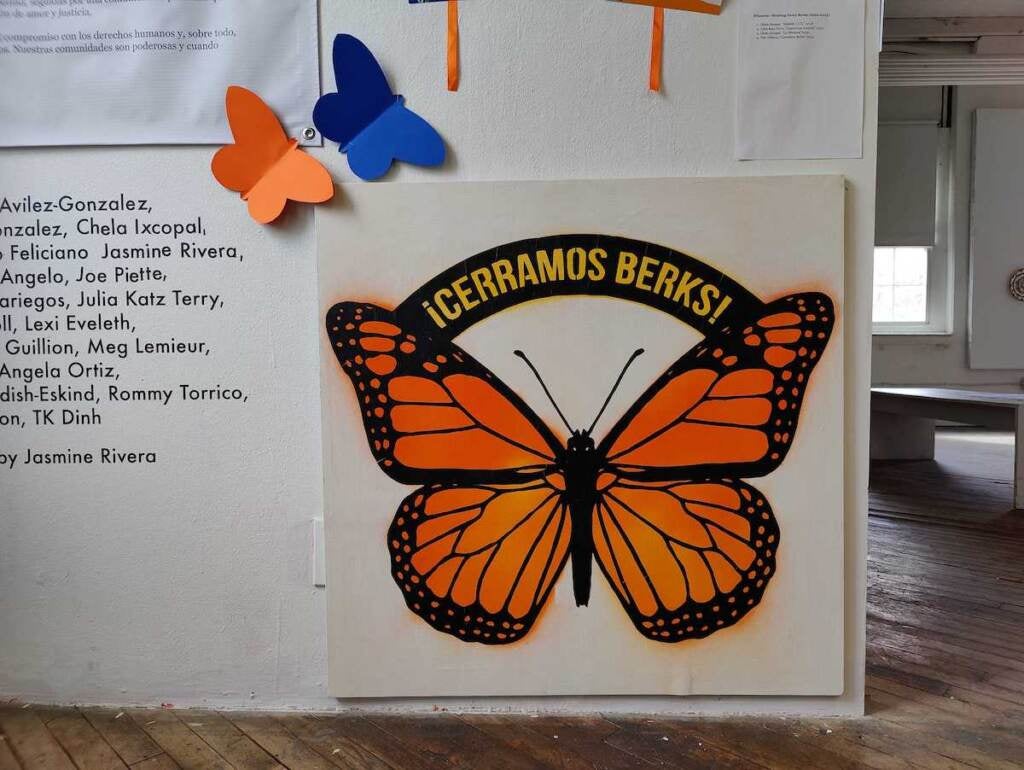
The variation of the butterfly used by the campaign was designed by Chela Ixcopal, who got involved with Shut Down Berks six years ago, while still a student at Moore College of Art, at the urging of a friend. Ixcopal felt a kinship with the movement because both his parents are immigrants: his mother from Guatemala, and his father from Ecuador.
“Ten years ago, if I was told, ‘Your artwork helped shut down a prison that detained immigrant people,’ I wouldn’t believe you,” Ixcopal said while standing in the gallery at Vox Populi. “Just seeing all this is overwhelming with joy. I definitely cried a few times.”
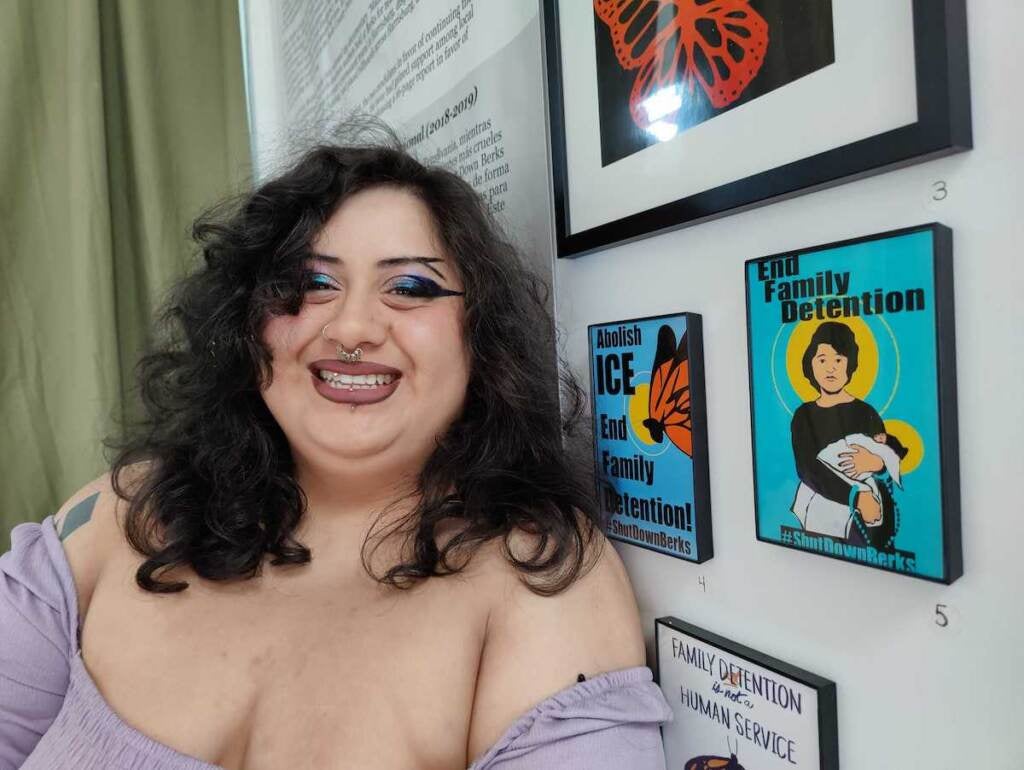
“Queremos Justicia” features a series of large posters made for the exhibition, detailing the shifting strategies the campaign undertook. Rivera hopes the exhibition can act as a model for other activists on how to organize a movement.
She plans to tour “Queremos Justicia” across the state, as a kind of victory lap.

“There is so much happening in this world right now and it is extremely overwhelming. I’m overwhelmed every day and I’ve been doing this work for a minute,” she said. “So to actually demonstrate a victory for once, to demonstrate that when our community comes together, we are so strong. We are so powerful. We can do this.”
“Also, wanting to show that we need every single person in the movement,” she added. “Not everyone is behind a bullhorn. We need these wonderful, amazing artists. Without these artists, there’s so much of this we couldn’t have done.”

Get daily updates from WHYY News!
WHYY is your source for fact-based, in-depth journalism and information. As a nonprofit organization, we rely on financial support from readers like you. Please give today.



